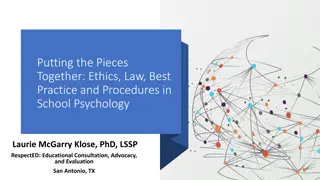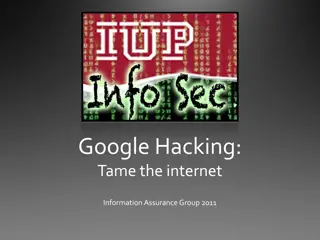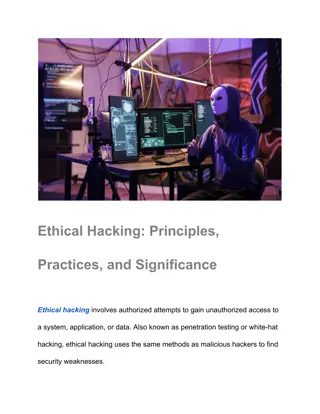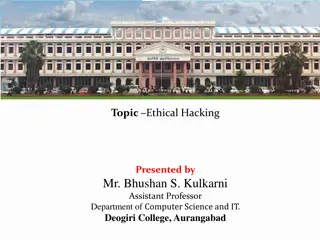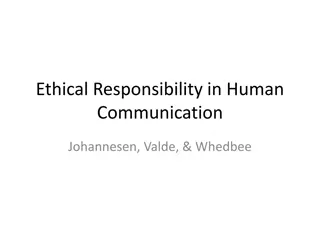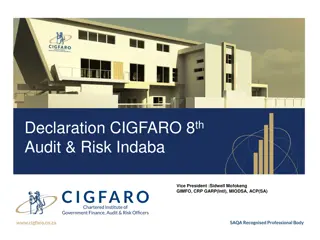Ethical Hacking Module 2 Case Studies
Explore various DoS attacks like Teardrop and Ping of Death, vulnerabilities such as Heartbleed, and attack strategies in ethical hacking. Understand the risks associated with outdated systems and common protocols. Learn about the Heartbleed bug that exposed sensitive data in OpenSSL. Discover the importance of fingerprinting and footprinting in selecting targets for security testing.
Download Presentation

Please find below an Image/Link to download the presentation.
The content on the website is provided AS IS for your information and personal use only. It may not be sold, licensed, or shared on other websites without obtaining consent from the author.If you encounter any issues during the download, it is possible that the publisher has removed the file from their server.
You are allowed to download the files provided on this website for personal or commercial use, subject to the condition that they are used lawfully. All files are the property of their respective owners.
The content on the website is provided AS IS for your information and personal use only. It may not be sold, licensed, or shared on other websites without obtaining consent from the author.
E N D
Presentation Transcript
ETHICAL HACKING MODULE 2- CASE STUDIES
TEARDROP DoS attack Sends fragmented packets with (intentionally) incorrect reassembly offsets Only works on OLD systems Windows 3.1x, Windows 95, Windows NT Linux kernel prior to 2.1.63.
PING OF DEATH TCP/IP allows fragmentation Hacker needs nothing except IP address
HEARTBLEED The Heartbleed bug was a serious flaw in OpenSSL a software library for applications that secure communications Widely used by Internet servers, including the majority of HTTPS websites
HEARTBLEED The SSL standard includes a heartbeat option It's possible to send a message that tricks the computer at the other end into divulging secret information Specifically, contents of the server's memory
HEARTBLEED In the real Heartbleed attack, the attacker can ask for up to 64,000 characters of plain text And it doesn t need to only ask once There is no message limit
FLOODS Ping HTTP DNS UDP
QUESTION(S) Most of these attacks are used against common standard protocols How do you go about selecting a target?
ANSWER Fingerprinting Footprinting
OUR SHOPPING LIST Intranet Protocols in use Internal domain names Network blocks IP addresses IDS/IPS Enumeration Internet Domain names Network blocks and subnets IP addresses of externally facing systems, TCP/UDP services, ACL s IDS/IPS Enumeration (users/groups, banners, etc.) 12
FOOTPRINTING An organization s attack surface is the set of exposed interfaces to the external world. These interfaces may be physical or logical: A door An open network port An employee Etc.
ASK C:\Users\Richard>nslookup Default Server: dnsr1.sbcglobal.net Address: 68.94.156.1 > set type=mx > cnn.com Server: dnsr1.sbcglobal.net Address: 68.94.156.1 Non-authoritative answer: cnn.com MX preference = 10, mail exchanger = atlmail5.turner.com cnn.com MX preference = 10, mail exchanger = atlmail3.turner.com cnn.com MX preference = 10, mail exchanger = nycmail2.turner.com cnn.com MX preference = 10, mail exchanger = nycmail1.turner.com cnn.com MX preference = 10, mail exchanger = lonmail1.turner.com cnn.com MX preference = 10, mail exchanger = hkgmail1.turner.com > cnn.com Server: dnsr1.sbcglobal.net Address: 68.94.156.1 Non-authoritative answer: Name: cnn.com Addresses: 157.166.226.25 157.166.224.26 157.166.224.25 157.166.255.19 157.166.255.18 157.166.226.26 Even meaningful server names reveal information 14
NSLOOKUP Name Server Lookup Finds name server information for domains by querying the Domain Name System Identifies which DNS server the computer is currently configured to use for its DNS lookups
MX RECORD Mail eXchanger record Specifies the mail server responsible for accepting email messages on behalf of a domain name
WORTH A TRY This attempts a zone transfer (list the entire contents of the name server) Disabling zone transfers is a pretty standard security measure Some domains overlook it 17
WHAT ADDRESSES? IP address space is assigned by an authority called a registrar and the assignments are public information If you know any address belonging to an organization, you can likely find out their entire netblock 18
US INTERNAL ADDRESS BLOCKS 10.0.0.0/8 IP addresses 10.0.0.0 10.255.255.255 172.16.0.0/12 IP addresses 172.16.0.0 172.31.255.255 192.168.0.0/16 IP addresses 192.168.0.0 192.168.255.255
FINDING HOSTS On a well-designed network, only the required hosts are visible to the Internet but not all networks are well-designed (or well-implemented on an ongoing basis). 20
FINDING HOSTS WARNING Do not scan a network unless you are authorized to do so 21
FINDING HOSTS There are many tools for scanning networks but we will cover nmap Open Source project Available as a download for multiple platforms at www.insecure.org 22
FINDING HOSTS A rather stealthy technique is to perform a reverse lookup on all IP addresses in the assigned address range. Manually, this could take quite a while but nmap will do it automatically for you nmap sL www.example.com/16 This command will do a reverse DNS lookup on all hosts in the class-B network that contains www.example.com On a busy network, this will look like just normal traffic 23
SUMMARY Thus far, using only normal Internet queries, we know CNN s website address Its nameservers Its mail exchangers Its assigned netblock So, we have a pretty decent idea of the Internet footprint of CNN 24
FINGERPRINTING Fingerprinting carries the recon process further by trying to identify the specific services and platforms used by an organization An important tool in this process is the port scan with version detection
POP QUIZ Ports What layer are they? How many are there? How do they relate to applications?
THE TCP/IP STACK Layer 5 HTTP SMTP DNS SSH Application Layer Layer 4 TCP UDP SCTP Transport Layer Layer 3 IP ICMP DHCP ARP Network (Routing) Layer Layer 2 Depends on underlying network. Data Link Layer Layer 1 Depends on underlying network. Physical Layer 27
PORT SCAN? A port scan basically attempts to connect to a host or set of hosts on every available (or possible port) It is useful for determining what network services are actually running and visible rather than those that are supposed to be running and visible 28
CAN THEY DO HARM? Theoretically, no Practically, they can expose problems with the implementation of the network stack For example, embedded network stacks may have small connection tables and scans may overflow them Usual result is to crash the device This is theft as it deprives the owner of the use of their property 29
NMAP PORT STATES Nmap classifies ports into states based on their accessibility. The most common states are: Open the port is accessible and some application is accepting connections on it Closed the port is accessible but there is no application listening on it (the host returned a RST) Filtered nmap cannot determine whether the port is open or closed because the probes are being filtered (the host returned nothing) 30
OPEN PORT Fyodor, NMAP Network Scanning, p. 97 31
CLOSED/FILTERED Which response is better from a security perspective? Fyodor, NMAP Network Scanning, p. 98 32
BASIC SCAN C:\Program Files\Nmap>nmap scanme.nmap.org Starting Nmap 5.21 ( http://nmap.org ) at 2010-09-07 09:59 Eastern Daylight Time Nmap scan report for scanme.nmap.org (64.13.134.52) Host is up (0.085s latency). Not shown: 993 filtered ports PORT STATE SERVICE 22/tcp open ssh 25/tcp closed smtp 53/tcp open domain 70/tcp closed gopher 80/tcp open http 113/tcp closed auth 31337/tcp closed Elite Nmap done: 1 IP address (1 host up) scanned in 14.22 seconds What kind of server is this? 33
BASIC SCAN C:\Program Files\Nmap>nmap scanme.nmap.org Starting Nmap 5.21 ( http://nmap.org ) at 2010-09-07 09:59 Eastern Daylight Time Nmap scan report for scanme.nmap.org (64.13.134.52) Host is up (0.085s latency). Not shown: 993 filtered ports PORT STATE SERVICE 22/tcp open ssh 25/tcp closed smtp 53/tcp open domain 70/tcp closed gopher 80/tcp open http 113/tcp closed auth 31337/tcp closed Elite Nmap done: 1 IP address (1 host up) scanned in 14.22 seconds What kind of server is this? What would you say if it was supposed to only be a web server? 34
THINGS TO NOTE A basic scan (no switches) does a basic scan but you need to understand the defaults Host up/down ping the host, send an SYN to port 443, send an ACK to port 80, send a ICMP timestamp request What if the firewall blocks ICMP? 35
STEALTH? -sS is called the stealth scan because it doesn t open a full connection on the port SYN sent via raw packet construction (i.e., doesn t use the O/S API) Send a SYN If receive a SYN/ACK, host network stack responds with a RST Networking equivalent of WTF? I wasn t trying to talk to you! Beware, even many consumer grade firewalls can detect a lot of SYN s coming on sequential ports from the same SRC address 36
VERSION DETECTION While standards specify the core of what protocols must do, each implementer has some freedom to make decisions These decisions create characteristics (a fingerprint ) that can be used to identify versions Some services also display their information in a banner 37
BANNER GRABBING Too Much Information? 38
USE THE SAME TECHNIQUES Scan your own networks and fix the vulnerabilities you find Rogue servers Rogue applications Firewall configuration problems IDS/IPS that doesn t 39
STOP THEM AT THE PERIMETER Default DENY is the firewall policy of necessity If it s not explicitly authorized, block it Use effective change management to make sure your configurations don t soften over time 40
MISINFORM What if your Windows box told an attacker it was a Linux box? Banner spoofing and other such techniques can confuse a scanner Be careful; it is an arms race and adversaries will adapt and innovate 41
DETECTION AND RESPONSE Black holes Reserve a portion of your address space as unused Since there are no services running on that address, any traffic to it is either an error or a scan Honeynets and Honeypots Provide virtual or real network services to decoy attackers and study their techniques Integrate with your Incident Response plan Beware of the continuous alarm syndrome 42






